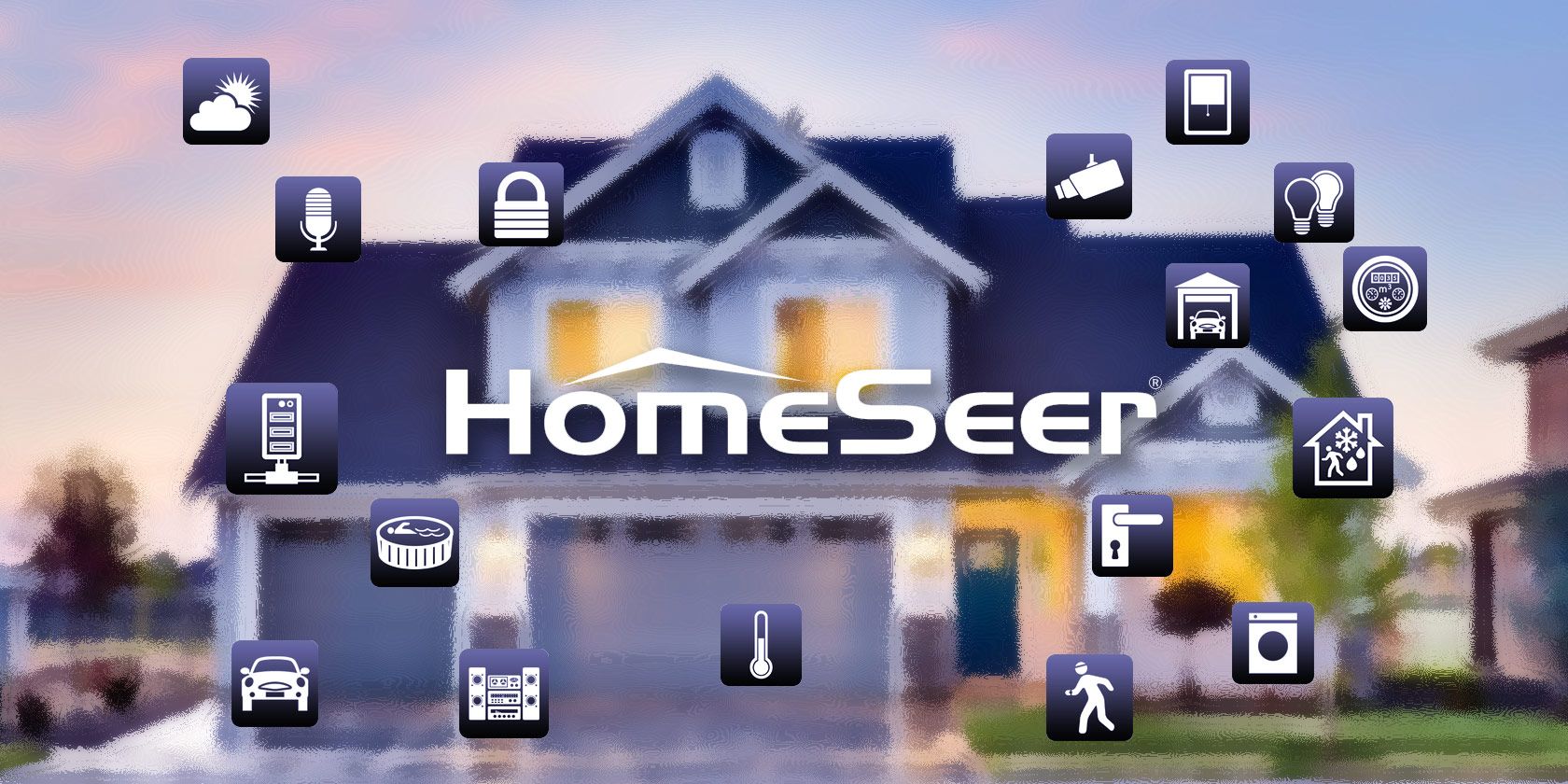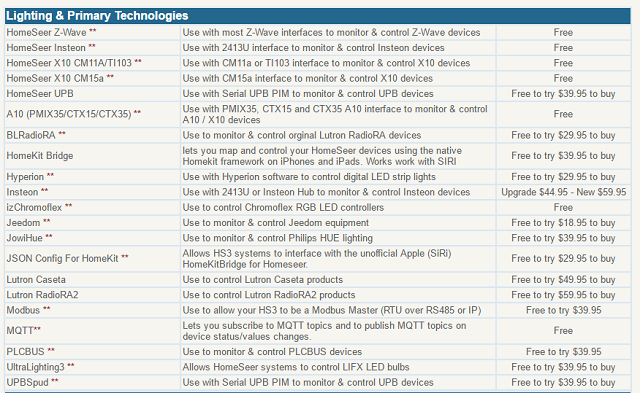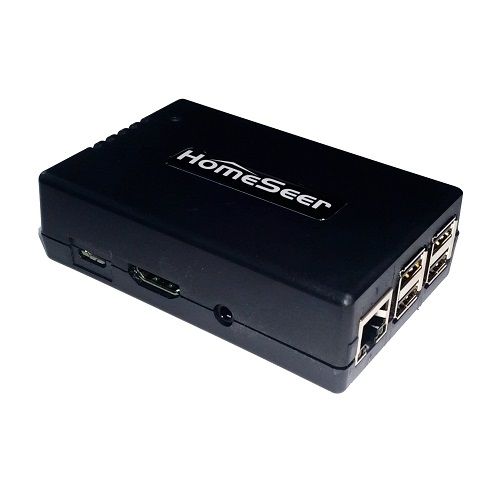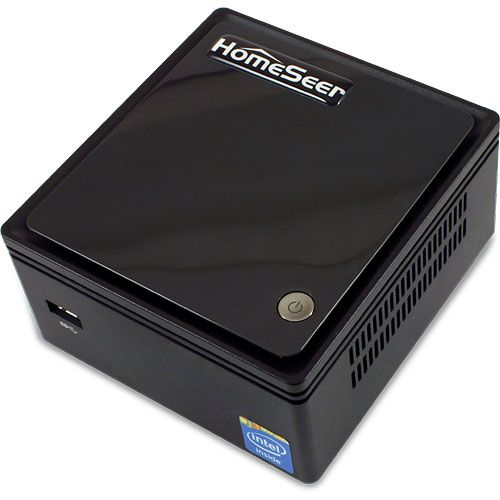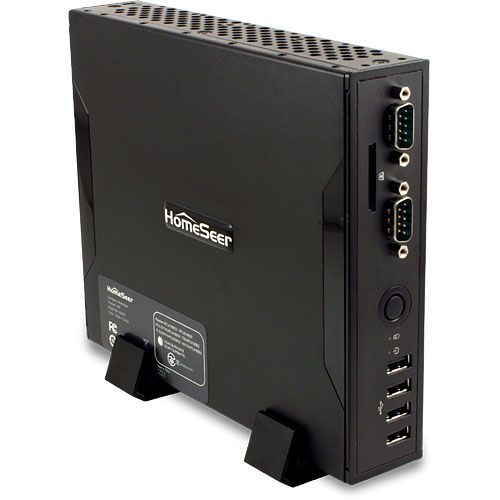When you start to build your smart home, you eventually reach a point where you want to combine and automate the gear you've bought. You could get a hub. There are thousands of these on the market, each with their own inherent advantages and disadvantages. Alternatively, you could get a HomeSeer Smart Controller, or "HomeTroller".
Exploring The HomeSeer World
The basic functionality of the HomeSeer system is that it allows you to automate your various smart home devices, and set conditions upon which they do something. You can combine devices, and you can remotely control them from anywhere in the world.
But wait, I hear you say. Isn't that basically a smart hub?
Not if HomeSeer can help it. On its website, HomeSeer is adamant it's not like one of the cloud-based smart hubs that have flooded the market in recent years. HomeSeer's HomeTrollers are "Internet independent", and will continue to work if there's an outage at your ISP. HomeSeer also emphasizes the security benefits from having a system not linked up to a potentially insecure service not controlled by the user.
There's another tangible benefit. Earlier this year, Revolv (a smart hub product acquired by Nest in 2013) was discontinued. The cloud servers that powered the hummus-tub-shaped boxes were switched off, leaving the devices utterly useless.
HomeTrollers are immune to this. Even if HomeSeer goes broke, the controllers will continue to work for as long as the hardware still works. As a result, the case could be made that it's got way more longevity than any other smart home hub on the market.
One problem with smart hubs in general is that they each support different types of devices. What can HomeSeer's offering interact with?
What Can HomeSeer Automate
HomeSeer has an interesting strategy for device and service compatibility. First, there's the nomenclature used. It calls integrations, "drivers" and "plugins" interchangeably.
The cheapest HomeSeer model only supports five different drivers at the same time, and only those that are built for the Linux version of the HomeSeer platform. The more expensive HomeSeer devices support an unlimited number of drivers, with some built for Windows, and others for Linux.
Furthermore, while many of these drivers are free to download and use, the vast majority are not. Premium drivers are monetized with a kind-of trialware model. They're free to try for a time-limited period, but after that the user has to cough up money. This is typically around $30 or $40, depending on the driver.
This might be unpalatable to some, especially when you've gotten used to the broad (and free) device support offered by the likes of Samsung SmartThings and Wink. But it makes sense when you consider that HomeSeer supports a huge number of highly niche protocols and devices.
It would be prohibitively expensive to support these devices for free, but this pricing model means that it's viable for HomeSeer to serve pretty much everyone.
Most of the mainstream stuff is free. You won't have to pay to connect HomeSeer with your Z-Wave, Insteon, or Sonos devices. But if you want to connect it to something more exotic, like an Arduino or a DD-WRT router, you'll have to cough up some cash.
In addition, HomeSeer's HomeTrollers work with IFTTT. This allows you to connect it to other online services, such as weather alerts and other smart home devices not natively supported by the HomeTroller through a driver. It also supports Amazon Echo, allowing you to control and automate your smart home with your voice.
Looking at the Hardware
What's fascinating about the line of HomeTrollers available is that on paper they're essentially fully-fledged computers.
There are five HomeTroller devices currently being sold by the company. The cheapest is the Zee S2, which goes for $199.99. It uses a non-descript 900Mhz quad-core CPU (probably ARM or Intel Atom, but I couldn't find anything online to confirm either way), and has 1GB of RAM.
But as your budget increases, so too does the power of the controllers, to the point where they're virtually indistinguishable from low-end PCs.
The HomeTroller SEL and SEL Pro [No Longer Available] both come with a 1.58 GHz dual-core Celeron CPU. The cheapest model has 2GB of RAM, while the more expensive one has 4GB.
The crème de la crème of the HomeTroller linup is the SES 6 and SES 6 Pro [No Longer Available]. These are rather expensive, costing $899.95 and $1,195.95. These come with a 1.80 GHz Celeron CPU, and 2 GB and 4GB of RAM respectively. The extra "oomph" is probably necessary, given they run Windows 7 Embedded.
In addition, they come with all the usual ports you might expect on a standard computer, including VGA and DVI (depending on the model), HDMI, and audio jacks.
The decision to use off-the-shelf PC hardware rather than a custom single-board, ARM-powered setup will perplex many. Smart home hubs are typically designed to use the least electricity possible, and use the most austere hardware possible while still running smoothly. The HomeTrollers tear up these conventions.
But to me, it makes lots of sense. HomeSeer isn't a hub. It doesn't rely on a cloud server to do the hard work. It does all its own calculations, scheduling, and processing locally. This requires more capable hardware.
Support and Customization
HomeSeer is unabashedly aimed at the higher-end of the market, both in terms of price, and in technical ability. Rather than one of the consumer-oriented, off-the-shelf app-based smartphone hubs, setting up a HomeSeer system requires a little more thought.
Thankfully, HomeSeer has a thriving online community. It also regularly holds webinars, which are published to its official YouTube channel.
Unlike many of the off-the-shelf smart home hubs, HomeSeer lets users create their own custom app experiences through the HSTouch Designer.
This will undoubtedly be attractive for any company using HomeSeer to create custom smart homes, as it will allow them to introduce their own branding into the app experience. However, HSTouch Designer costs $199.99, and thus is completely unaffordable for most regular users.
The Not-Quite-A-Smart-Hub You'll Crave
If you're looking for a versatile and robust system to automate your various smart home devices, the HomeSeer is for you. Sure, it's a little bit more complicated than some of the off-the-shelf offerings on the market right now. It's also a little bit more expensive.
But you get what you pay for. HomeSeer is powerful. It allows you to make it how you want. Since it's not contingent upon the cloud, it will work when your Internet goes down, and you don't have to worry about someone discontinuing the cloud servers, as Nest did with Revolv.
To me, it's a no-brainer.
Have you used HomeSeer before? What do you think of it? Tell me in the comments below.

